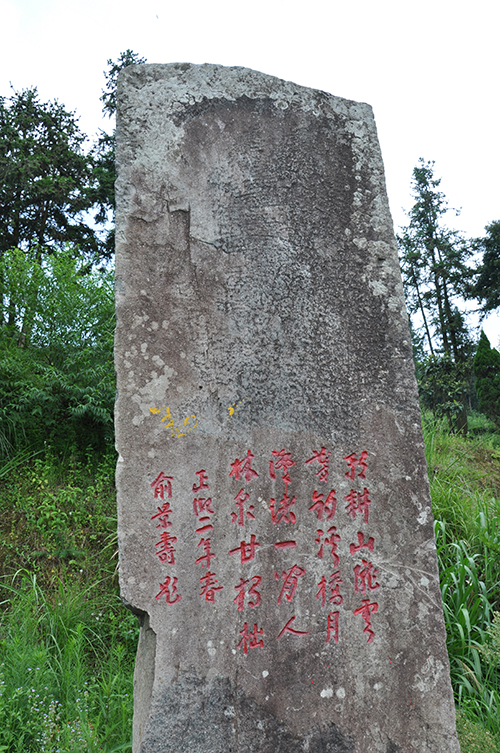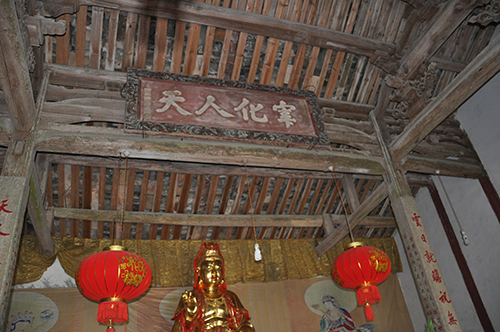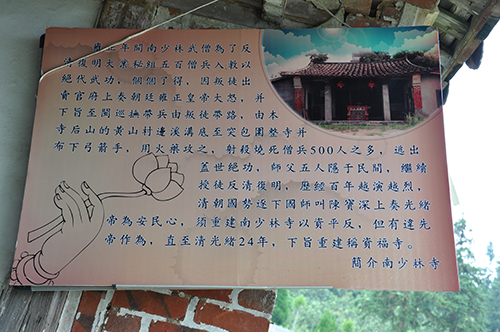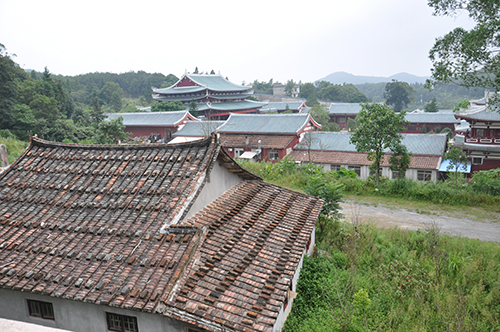Part 2: Putian
Translation assistance by Miao Hui
For Part 1: Quanzhou, click here.
 Putian South Shaolin Monastery
Putian South Shaolin Monastery
Introduction
Originally known as Linquan Yuan, or the “Court of Spring in Woods,” the South Shaolin Monastery in Putian was built in 557. According to Putian Shaolin sources, after the enthronement of Emperor Taizong (Li Shimin), pirates plundered the southeast coast of China. Monk Daoguang, one of the thirteen Shaolin warrior monks who fought to win the Tang Dynasty for the soon-to-be emperor, was sent with a force of about 500 to Fujian to suppress the pirates. After this the monks were asked to stay by local residents, and subsequently gained permission from the emperor to build a branch of Shaolin Temple at Putian. According to the story, before building the Monastery, Monk Daoguang went back to Songshan Shaolin to meet with Master Tanzong. The master gathered the community and chanted, “Years have passed since pacifying the coast, and so a rest place will be found at the foot of mountain with nine lotus. One monastery it is, though separated in the south and in the north, Chan sect of Mahayana shall always remain in the heart.” So Monk Daoguang was sent to look for a location in Fujian similar to Songshan and found Linquan Yuan which had a similar landscape. The location was surrounded by nine mountains that resemble the petals of a lotus flower. There it was decided to build the Putian South Shaolin Monastery.

The Monastery Today
These days between 10 and 20 monks live at Putian South Shaolin Monastery at any one time, with about half of them being martial art monks. Unfortunately, on the day we were there, no martial art monks were to be found within the monastery grounds. Inquiring at the office, I learned they had been called away to participate in training. However, there were a couple of rather elderly but quite spry (!) monks, who were very helpful in welcoming us to the temple, and a young lady dressed in a gray monk outfit (a lay disciple) who helped us find the office.
After touring the monastery we went looking for the remains of the old monastery and were told they could be found to the left of the monastery proper. Looking up the hill we saw large buildings which turned out to be new monks’ quarters and what looked to be a large new assembly hall. Construction workers were doing finishing work there when we saw a monk (in orange) briskly walking by, who turned out to be directing the construction workers. His name was Shi Yan Xing. He was from Songshan Shaolin and, like most Chan (Zen) monks, was quite friendly, had a sense of humor and was easy going, in spite of the fact that he was working quite hard.
After he went back to work, I looked around behind the ancient monks’ quarters (again – outside the monastery proper) and found the remains of what looked to be old temple walls and some ancient foundations. The area was heavily overgrown with jungle, and a small new outdoor meeting area was being constructed in the center of those ruins.

Outside Guan Yin Hall in Putian Shaolin Monastery there is a small sign with a prayer that reads as follows:
Your biggest enemy is yourself.
Your biggest failure is your arrogance.
Your biggest stupidity is cheating.
Your biggest sadness is jealousy.
Your biggest mistake is giving up yourself.
Your biggest guilt is killing.
Your biggest admiration is learning and improving.
Your biggest break is hopelessness.
Your biggest wealth is health.
Your biggest debt is emotion.
Your biggest gift is forgiving.
Your biggest loss is no wisdom.
Your biggest gratification is giving.
Your biggest pathos is self-pity.
Abbot Xuecheng of Putian Shaolin Monastery
Venerable Master Xuecheng was born in Xianyou, Fujian in 1966 and started his monastic life in 1982 following Venerable Master Yuanzhuo. In 2007 he graduated from the Buddhist Academy of China with a master’s degree. He holds a number of distinguished positions, including Secretary General of the China Committee on Religion and Peace, Vice President of the Buddhist Association of China, Vice President of the Buddhist Academy of China, Vice Director of the Institute for Advanced Study of Humanities and Religion of Beijing Normal University and Abbot of the monasteries of Guanhua and South Shaolin (Putian), Famen (Fufeng, Shaanxi) Longquan (Beijing). He is well-known in China and around the world for being the “cyber Abbot.” For example, he has an amazing on-line blog and excellent multi-lingual cyber-development of Buddhist resources, websites, etc. His monasteries tend to be very successful and quite active in the communities where they reside.
It’s rather difficult to get an appointment with Venerable Master Xuecheng. However, join one of his communities and he may appear at any time for conversation or interviews. He is rather tolerant of divergent points of view, as evidenced by the activities of some of his monks, such a Liang Lu, a somewhat radical monk who espouses some unusual views, dabbles in politics and is somewhat freer than most Buddhists might accept (A news story about this unusual monk can be found at: http://www.longquanzs.org/eng/articlecontent.php?id=1398).

Helpful Facilities in and around the Monastery
There was one restaurant outside the monastery; however, the owner double billed me when we left. Best to check prices and write them down on paper before ordering food. There is a small gift shop inside, but there’s nothing in English. Like most Buddhist gift shops, they had small jade Buddhas, prayer beads and so on. Outside the monastery there was another shop mostly selling monk clothes and shoes to monks.
Summary
There is ample historical evidence that this Putian monastery was associated with Shaolin for centuries; however, it appears little effort is invested in proving or communicating its historical authenticity. Instead, it appears to be a (rather small) monastery devoted to Buddhism and propagation of Shaolin martial arts, in that order. Perhaps if more of the Shaolin monks had been there it might have been different.
Monastery Contact Information
Putian Shaolin Monastery
South Shaolin Monastery, Xitianwei Town, Licheng District, Putian, Fujiang Province, China
Zip code: 351131
Tel: 0594—2866001
Fax: 0594—2866001
http://longquanzs.org/
About
Gregory Brundage :
![]() As a boy going to schools in different countries, Gregory Brundage AKA Shi Long had to fight a lot. At age 12 he started Judo, and after that Wushu. Since then he's fought in more than 300 martial arts tournaments. He's worked at a variety of jobs, ranging from farming and construction work to university lecturer. He is currently a teacher in Beijing.
As a boy going to schools in different countries, Gregory Brundage AKA Shi Long had to fight a lot. At age 12 he started Judo, and after that Wushu. Since then he's fought in more than 300 martial arts tournaments. He's worked at a variety of jobs, ranging from farming and construction work to university lecturer. He is currently a teacher in Beijing.
![]() Print Friendly Version of This Article
Print Friendly Version of This Article
















